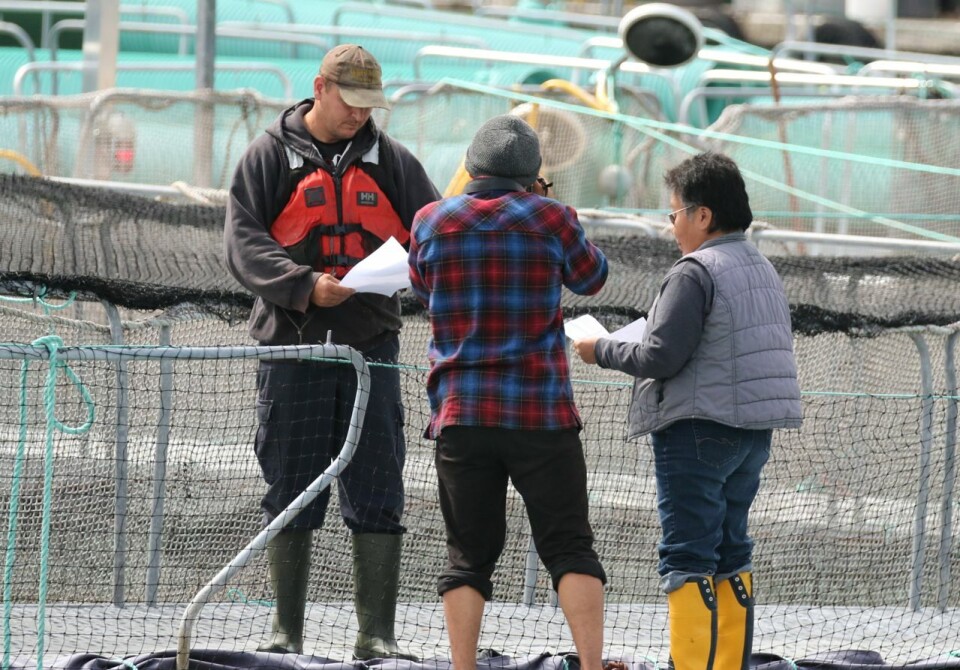
A flagrant disregard for scientific integrity
Despite claims to be conducting “scientific audits” of the salmon farming industry in BC, the crew of the Sea Shepherd's vessel, the Martin Sheen, appear to be disregarding credible scientific methodology and lacking suitable equipment - as shown by a recent claim to have found dead, wild Pacific salmon at a farm site.
The self-described vegan crew of the Martin Sheen is comprised entirely of volunteers “from all walks of life”, according to the latest blog post from a local newspaper.
Which would be great at an animal rehabilitation center, or a local organic market – but for a “research mission” that aims to collect scientific samples and conduct audits from an aquatic animal health perspective, it would be prudent for at least some of those volunteers to have some training in the matter at hand.
The crew claim to be on a research mission, but by their own admission, are acting on the whim of a professional activist and don’t have a plan.
In fact, when attempting to arrive at an uneducated guess about some “strange” fish behavior a couple of weeks ago – which turned out to be normal behavior by fish suffering from low dissolved oxygen – the crew of volunteers relied on a donated oxygen meter for their photo op.
In fact, since their hunt began (for something that is already known to exist – yes, we already KNOW piscine reovirus is literally everywhere) - there has not been one single documented scientific or research-associated activity: flying drones overhead or taking pictures of farm workers eating their breakfast doesn’t count.
Neither does taking pictures of dead, rotting, liquefied salmon in a mort tote and then making public statements of its apparent wild lineage.
Morton, the self-proclaimed salmon biologist, issued a press release on Thursday stating that she observed dead wild pacific salmon in a mort tank.
Melissa Willie, a band councilor with the Dzawada’enuxw First Nation, was at the farm operated by Cermaq Canada to deliver a letter on behalf of her people, expressing disapproval of the salmon farming industry.
The press release included a photo of Willie lifting the lid on a tote full of dead salmon.
“Alexandra Morton, an independent scientist accompanying Willie, identified the bodies of ten wild salmon on the surface of just the first of many totes used by the farm,” the press release stated.
“On the next farm there were juvenile wild salmon in the totes among the large farmed salmon! The much smaller wild salmon are lined up on the left and the much larger farm salmon carcass is lying under where their tails would be,” the release continued.
But, according to Cermaq, those morts were absolutely not wild salmon, but were from the company’s brood site, about 3km from where the crew was visiting.
Laurie Jensen, a spokesperson for Cermaq, said about 10% of the fish raised at the brood site die. This die-off is a normal occurrence in any population of fish, wild or cultured. Some individuals don’t grow as quickly, and are out-competed by the fish who do.
“I am saying, categorically, these are not wild Pacific salmon,” Jensen said.
What is interesting is how Morton was able to make the immediate conclusion that the morts were wild salmon, when the carcasses she shows as her proof are nothing but a skeleton with a head.
If the team had access to some scientific training, perhaps they would have made a hypothesis, tested that hypothesis and then – based on the results – come to a conclusion.
In this case it might go something like this:
Hypothesis: We hypothesize that the mort is a wild juvenile salmon.
Testing the hypothesis: What are its characteristics? Does it have the usual black spots on the operculum of an Atlantic salmon? Does it have black gums like a Chinook or coho? (etc, etc)
Results: We cannot determine the physical characteristics because the fish is liquefied and all that remains is a skeleton.
Conclusion: We don’t know whether the fish is a farmed Atlantic or wild Pacific salmon.
It’s known as the scientific method, and it’s critically important because it prevents one from making assumptions or conclusions that are based on correlational or personal bias.
Unfortunately, it’s not just the missing equipment or missing evidence for their allegations. It’s not just the missing expertise required to make educated guesses as to what may or may not be occurring. No, what is missing is scientific integrity, or any semblance of due diligence that comes with scientific training. At the end of the day what is missing on this voyage is a scientist.






















































